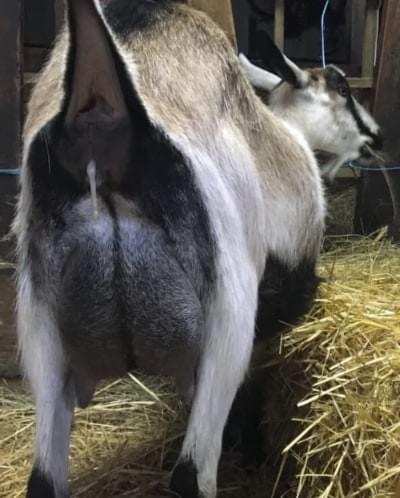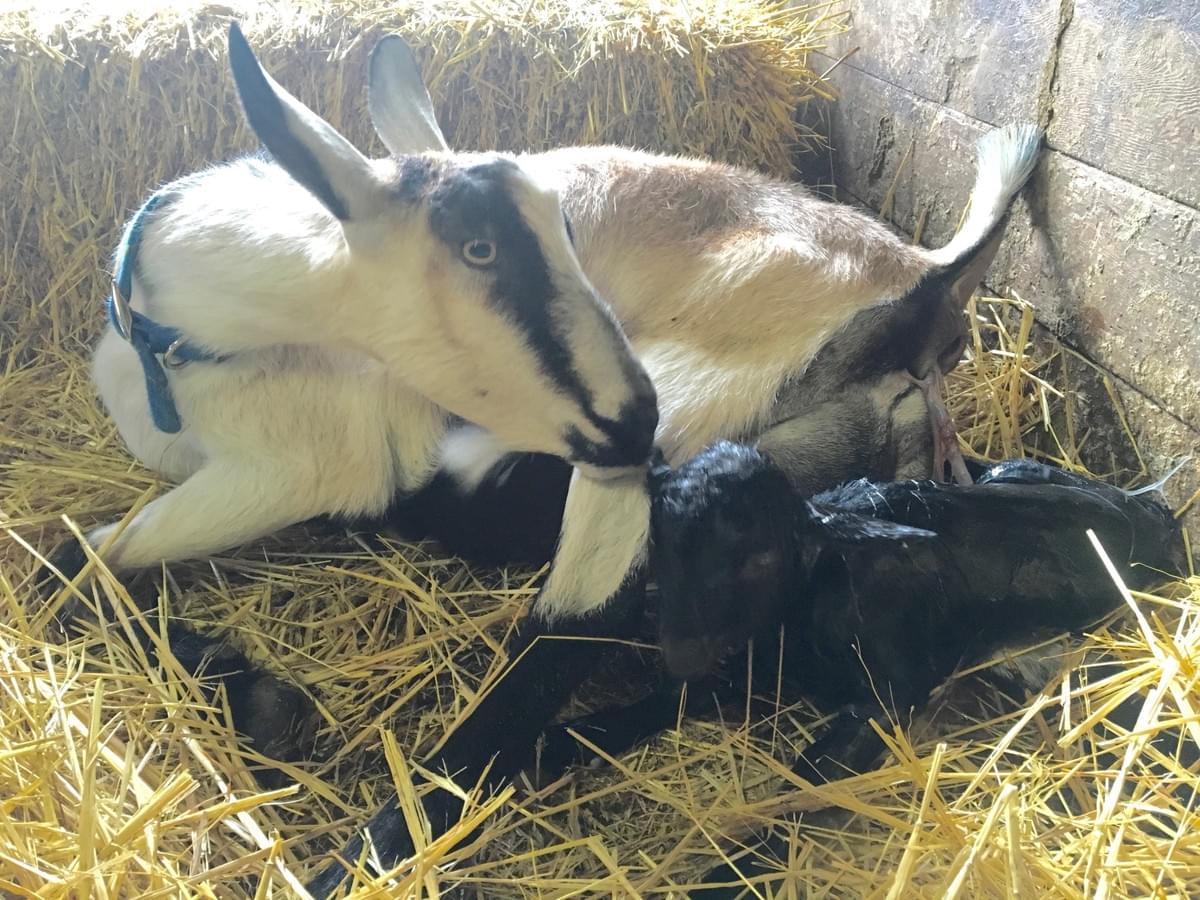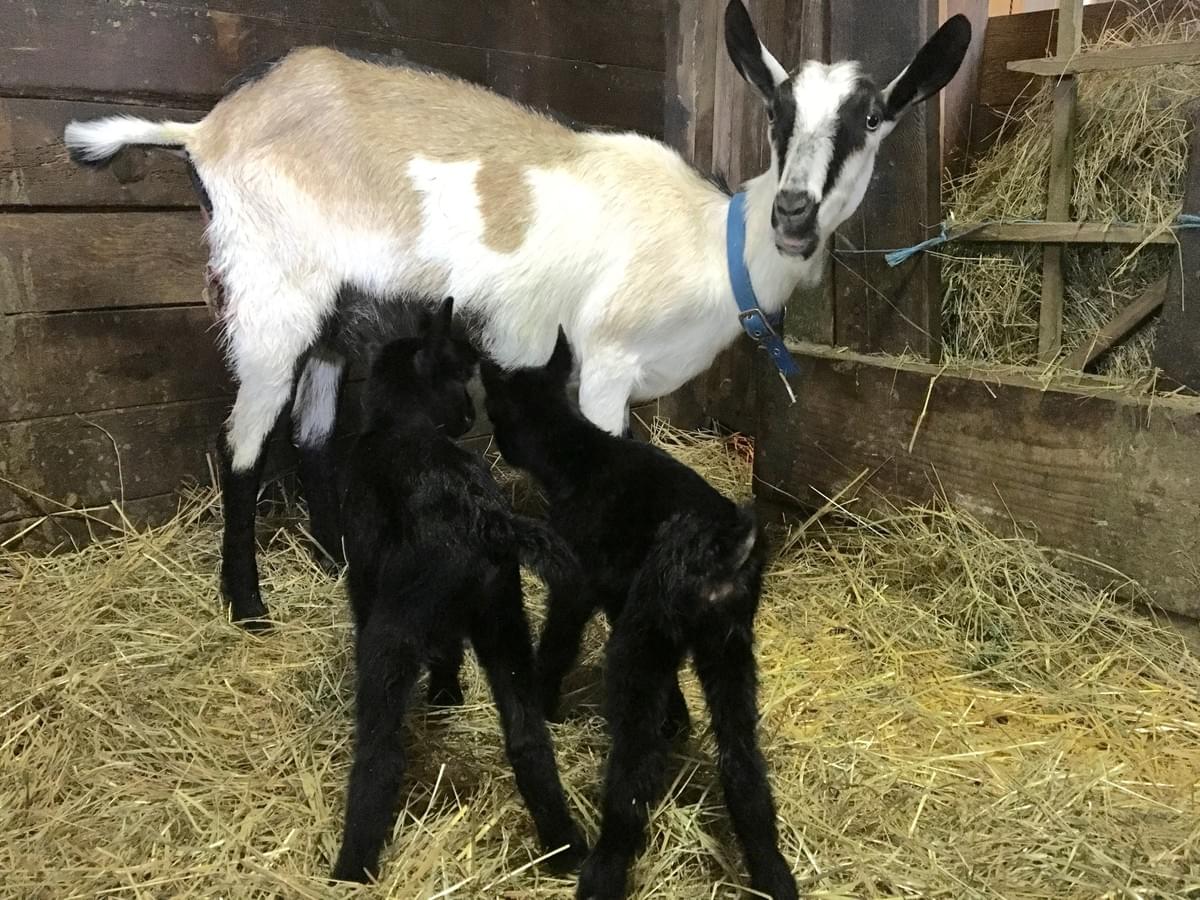Finally! It's time!
Or is it?
In the last week or two before the doe is due there are a lot of rapid changes. She looks bigger every day. Her udder is bigger every day. Or it isn't. She leaks goo out her back side. Every day. Her pin ligaments are loosening. These are all signs that kidding is close but none are signs that kidding is imminent. So how do you know when it's the real deal?
The udder is probably the least reliable way to tell if your doe is ready to kid today. Some does get a huge udder weeks before kidding and some wait until hours, or even a few days, after they drop kids on the ground. Her pin ligaments will soften and get looser until one day you really can't find them. That's the day she's going to kid. The pin ligaments are the most reliable way to know if the doe is really ready to kid.
At this point you can start checking the doe every couple hours. You are watching for early labor. This is where knowing your goats very well really pays off. You might simply notice that she's just "not herself" without being able to really pin down what's different. She might skip breakfast or eat with less gusto than normal. She may keep eating and just seem a bit distracted. My does often just seem uncomfortable. I know I was uncomfortable and restless in early labor so that's something to watch for! She might lay down, only to get right up and then a minute later, lay down again. Eventually there will be a long opaque strand of discharge. This will be what's left of the mucus plug coming out as she dilates and prepares to kid. At that point it's time to stick around.

Notice Ida is still eating? She ate right up until she was pushing. So have several other does I have. Nothing puts them off their feed!
Not too long after this strand appears the doe will get increasingly uncomfortable and you might see her pawing the ground and making a nice bed. She's probably having pretty good contractions by now that you can see. Soon she'll start pushing. I would say that she'll lay down and push but I have one doe that won't lay down at all during her labor or delivery. I guess there's always one exception, right? It's usually around this point that the doe will start "talking" to her kid. She'll make a deep quiet maa to her belly/backside and she will keep this up until her kids are born.
As she pushes, things will begin to show. First, there will be a bubble. It might remain a bubble for quite some time but eventually feet will appear in the bubble. Newborn kid feet feet are white, so don't be surprised if they look a bit strange! Closely following the feet will be the nose. This leads to the very worst part of delivery. The doe will most likely have to really push to get the forehead out. After the head is out she might take a bit a of breather, then the rest of the kid is usually fast to follow.

After the kid is born the doe will turn, or get up, to reach it. She will lick it and talk to it pretty nonstop. The kid will try to shake it's head and move it's legs. Very soon it will try to stand and start poking about for a teat.

The doe might lose interest for a moment if she's not done yet. Or she might stand up and clean the first kid while pushing out the second! I've been caught by surprise more than once, marveling at the new life and watching the doe clean and care for it and completely oblivious to the fact that she's already pushed the second kid 90% out and instead of catching it, I let it drop on the ground like a jerk! Welcome to world kid #2!

Here is the bubble emerging with kid #2. You can see the poor does vulva is already pretty stretched and she's got a couple small tears from delivering the first kid. This was Ida's first freshening and she made it look easy. We help the doe clean off the kids, then we dip the umbilicals in 7% iodine (you have to get this from your vet now), and we help the kids find the teat and get their first drink of colostrum. When doing this we make sure that the kid is positioned with their butt towards the does head so she can still smell them and lick them. The bonding process is extremely important so finding ways to help without distracting the doe too much or taking her kids away is a good idea.

Now I'm going to let you all know a few things.
First, goats are good at kidding! Seriously, they are. More than 95% of kiddings don't need intervention. I see a lot of blogs and such that advise putting a hand in to check the kids position at the first sign of kidding. This is BAD ADVICE! You risk causing infection, tearing the uterus, and damaging the cervix if she's not fully dilated. The does health comes first. Another problem with checking too early is that the kids are still getting into position. Of course they don't present correctly when you check early, they're not ready yet!
Second, make sure the kids nurse right away. We try to get kids on the teat within the first 20 minutes. Kid mortality rates rapidly shoot up to around 50% if the kids don't get colostrum within the first 60 to 90 minutes. If our kids haven't gotten a good suck by 45 minutes or so we milk the doe and bottle feed the kid for the first few hours. This will keep the kids energy up too so it can keep trying.
Third, sometimes s*!t happens. No breeder has a perfect score. If you have a kid that presents wrong, the odds are very high that it's already dead. These things happen, not often, but they do happen.. This is a variation of #1 but seriously, goats almost always do this well. In six years we've kidded quite a few does and only had to help once and it was a minimal amount of help required. Also, you have time. Unless the kids back end is hanging most of the way out of the doe with the head still inside (if this is the case, pull it out NOW!), you have time. Really, you can make the drive to the vet after mucking around for and hour and odds are still good that you get live kids.
Fourth, and last, relax! This is a variation of #1 but seriously, goats almost always do this well. In six years we've kidded quite a few does and only had to help once and it was a minimal amount of help required. Also, you have time. Unless the kids back end is hanging most of the way out of the doe with the head still inside (if this is the case, pull it out NOW!), you have time. Really, you can make the drive to the vet after mucking around for an hour and hour and odds are still good that you get live kids. Less than 1 in 20 kidding will need any kind of assistance. This means you can stop worrying (or not, I feel better if I worry some!).

I hope you all have a very happy kidding season!